.
9.02.2015

Green light! Vega is approved for this week’s suborbital mission with the European IXV spaceplane

provides an inside look at the launch readiness review for Vega Flight VV04, which was conducted February 9 in Arianespace’s operations building at the Spaceport in French Guiana.
-
Vega Flight VV04
The lightweight Vega member of Arianespace’s launch vehicle family has been given the “all clear” for liftoff on February 11 with its European Intermediate eXperimental Vehicle (IXV) payload.
This approval was announced after today’s successful launch readiness review, which is a regular step before each flight of an Arianespace launcher from French Guiana. It confirmed that the Vega and IXV passenger are flight-ready, along with the Spaceport’s infrastructure and the tracking stations for its suborbital trajectory.
The upcoming mission is designated Flight VV04 in Arianespace’s numbering system and will mark the launcher’s second flight within the European Space Agency-managed VERTA (Vega Research and Technology Accompaniment) program. It will be performed from the Spaceport’s ZLV launch site – where the Vega was assembled and now stands in a flight-ready configuration, protected by a mobile gantry that will be rolled back beginning at 2 hrs. 40 min. prior to liftoff.
With today’s readiness review completed, all is set for the Vega’s departure during a 1-hr., 43-min. scheduled launch window that opens on February 11 at 10:00 a.m. local time in French Guiana.
The IXV payload – built for the European Space Agency by Thales Alenia Space – will test reentry technologies that can be used in developing systems and advanced technologies for future transportation systems. After lifting off from South America, Vega will deploy it into a trajectory reaching a maximum altitude of approximately 420 km. During the mission, IXV will fly a fully autonomous profile, splashing down in the Pacific Ocean approximately 100 minutes after liftoff, with the unmanned spaceplane subsequently being picked up by a recovery ship.
Vega is one of three launchers operated by Arianespace at the Spaceport, along with the medium-lift Soyuz and heavyweight Ariane 5. The Vega vehicle’s industrial prime contractor is ELV S.p.A., a company created by Avio and the Italian Space Agency (ASI).
.

Quelle: araienspace
.
Update: 11.02.2015
.
Vega enters the countdown for its February 11 flight with Europe's IXV spaceplane

Vega Flight VV04
The countdown is underway for Vega’s flight with the European Intermediate eXperimental Vehicle (IXV), with liftoff scheduled during a 1-hr., 43-min. launch window that opens on February 11 at 10:00 a.m. local time in French Guiana.
This lightweight member of Arianespace’s launch vehicle family now stands in a flight-ready configuration at the Spaceport’s ZLV launch site – where it is protected by a mobile gantry that will be rolled back beginning at 2 hrs., 40 min. prior to liftoff.
Designated Flight VV04 in Arianespace’s numbering system, the mission will mark Vega’s second within the European Space Agency-managed VERTA (Vega Research and Technology Accompaniment) program to showcase this vehicle's flexibility and versatility.
The industrial prime contractor for Vega – which is one of three launchers operated by Arianespace from French Guiana, along with the medium-lift Soyuz and heavyweight Ariane 5 – is ELV S.p.A., a company created in December 2000 by Avio and the Italian Space Agency (ASI).
During the upcoming flight, IXV – an unmanned spaceplane built for the European Space Agency by Thales Alenia Space – will be deployed by Vega into a suborbital trajectory that ends with the payload’s splashdown in the Pacific Ocean, after which it will be picked up by a recovery ship.
The research and industrial community will have an opportunity to use the IXV’s atmospheric reentry data for future applications in exploration, science, Earth observation, microgravity and clean space.

Quelle: arianespace
---
LIVE: 13.10 MEZ
-

...
Update: 14.00 MEZ


...






...
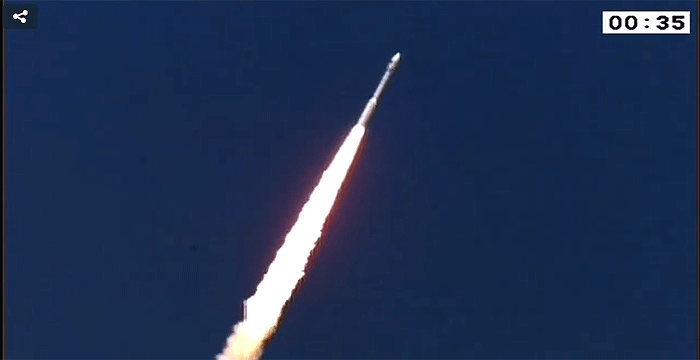





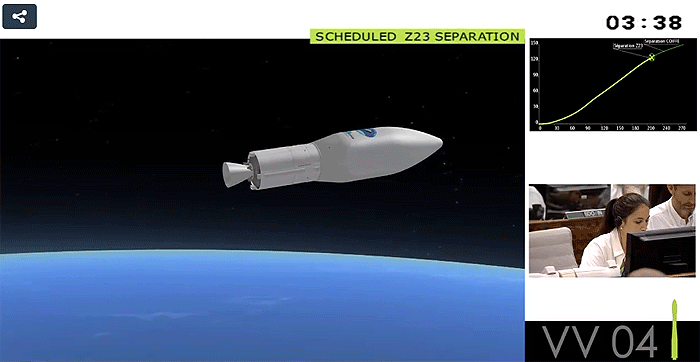
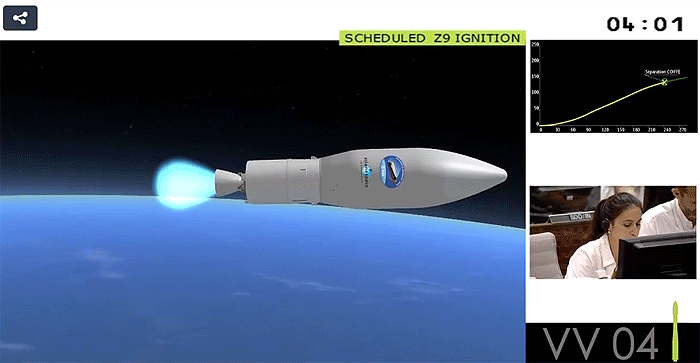

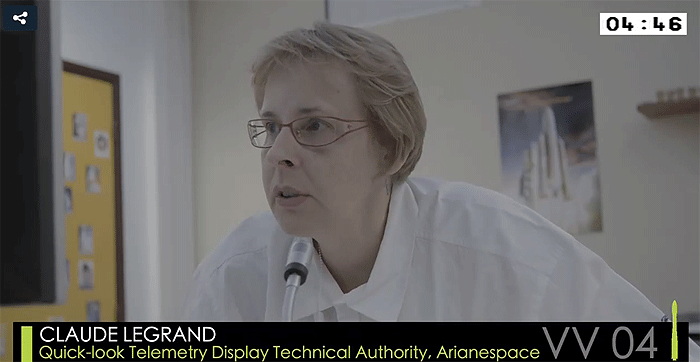
...


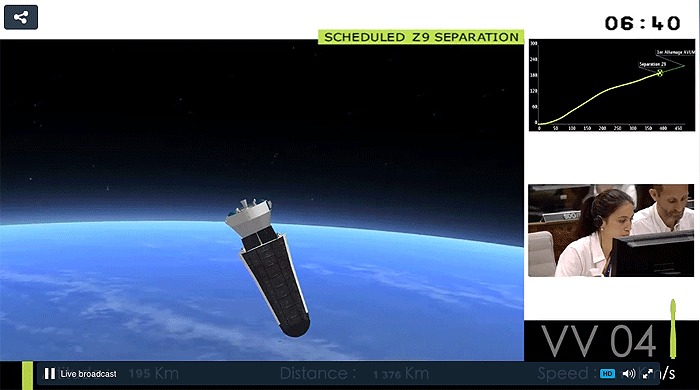




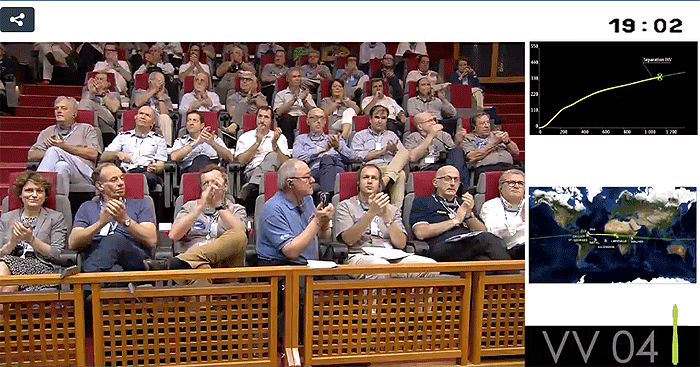


...



...


... 15.43 MEZ


...
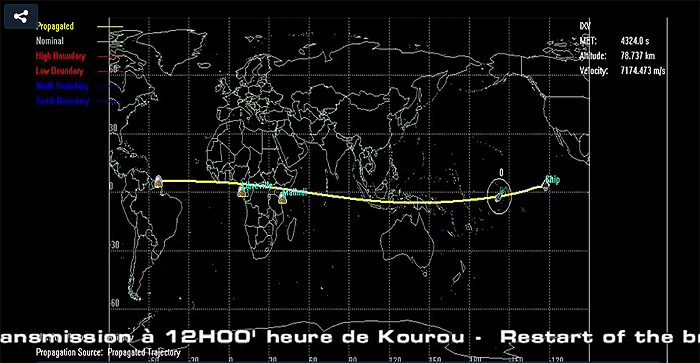

...16.23 MEZ
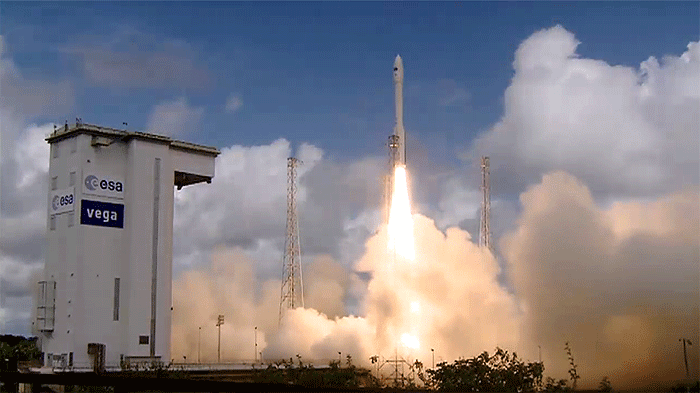


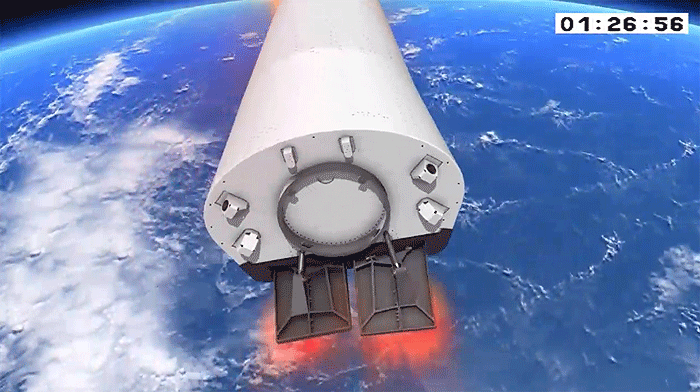


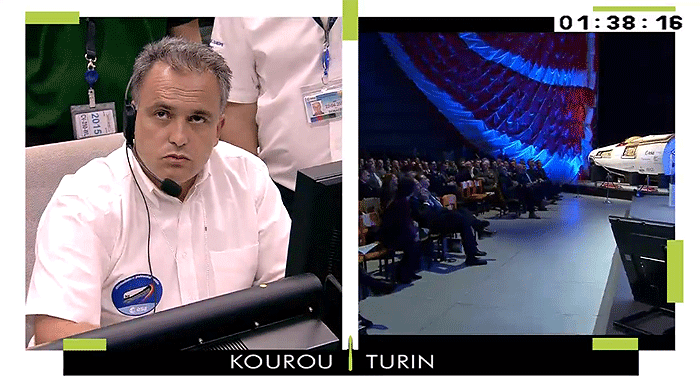



...Quelle: arianespace
.
Update: 22.30
.
Vega VV04 : launch of IXV reentry demonstrator
First launch of the year from the Guiana Space Center, a mission for the European space industry
Vega, the latest member of the family of launchers operated by Arianespace, and built by ELV as prime contractor, has successfully launched the IXV (Intermediate eXperimental Vehicle) atmospheric reentry demonstrator. The fourth Vega launch took place on February 11 at 10:40 am (local time) from the Guiana Space Center in French Guiana. Developed by the European Space Agency, the IXV marks the latest step by Europe in the development of atmospheric reentry technologies, a key to manned flights.
The Vega launcher lifted off from the Vega launch complex (SLV) in Kourou, French Guiana, on February 11, 2015 at:
10:40 am, local time in Kourou,
08:40 am in Washington DC,
13:40 UTC,
02:40 pm in Paris.
On the fourth Vega launch from the Guiana Space Center, the launcher carried a payload of 1,932 kg, including about 1,845 kg for the IXV demonstrator.
.

ESA’s Intermediate eXperimental Vehicle flew a flawless reentry and splashed down in the Pacific Ocean just west of the Galapagos islands.
The IXV spaceplane lifted off at 13:40 GMT (14:40 CET, 10:40 local time) on 11 February from Europe’s Spaceport in Kourou, French Guiana atop a Vega rocket. It separated from Vega at an altitude of 340 km and continued up to 412 km. Reentering from this suborbital path, it recorded a vast amount of data from more than 300 advanced and conventional sensors.
As it descended, the five-metre-long, two-tonne craft manoeuvred to decelerate from hypersonic to supersonic speed. The entry speed of 7.5 km/s at an altitude of 120 km created the same conditions as those for a vehicle returning from low Earth orbit.
IXV glided through the atmosphere before parachutes deployed to slow the descent further for a safe splashdown in the Pacific Ocean.

.

.
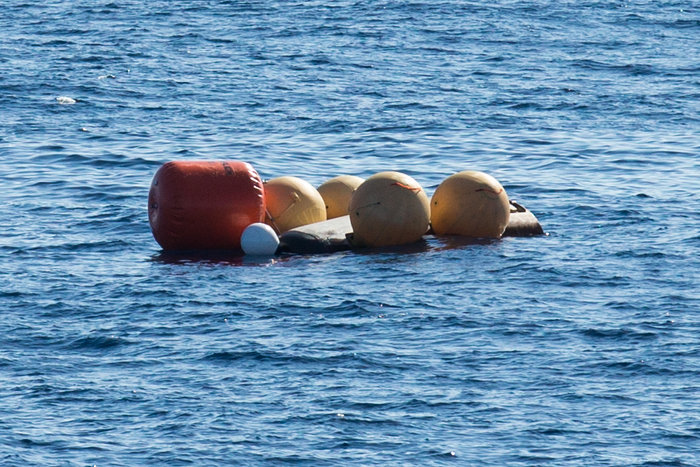
Quelle: arianespace
-
Update: 12.02.2015
.
Recovery of ESA’s Intermediate eXperimental Vehicle in the Pacific Ocean just west of the Galapagos islands.
The IXV spaceplane lifted off at 13:40 GMT (14:40 CET, 10:40 local time) on 11 February from Europe’s Spaceport in Kourou, French Guiana atop a Vega rocket. It separated from Vega at an altitude of 340 km and continued up to 412 km. Reentering from this suborbital path, it recorded a vast amount of data from more than 300 advanced and conventional sensors.
As it descended, the five-metre-long, two-tonne craft manoeuvred to decelerate from hypersonic to supersonic speed. The entry speed of 7.5 km/s at an altitude of 120 km created the same conditions as those for a vehicle returning from low Earth orbit.
IXV glided through the atmosphere before parachutes deployed to slow the descent further for a safe splashdown in the Pacific Ocean.
.



Quelle: ESA
4414 Views
